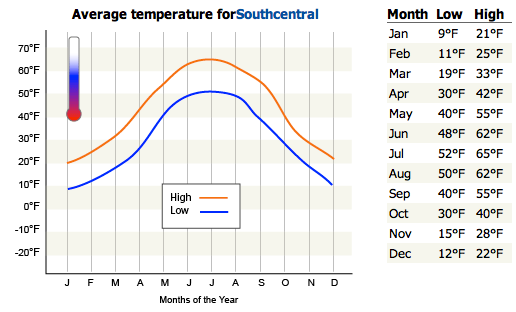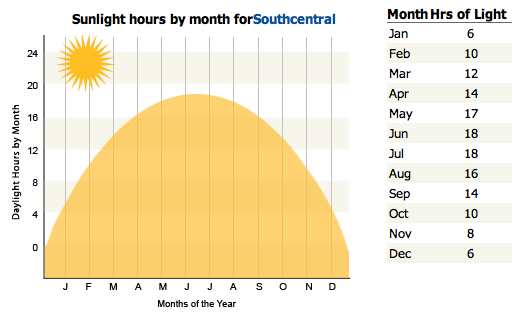Post by pretzel on Jan 13, 2013 16:10:00 GMT -5
Where They Live

The cats of Kalopsia Borealis have made their home in the Alaska Range mountains of South Central Alaska. Living here, however, is no easy feat. Not only do the Clans have to deal with the usual dangers, trouble lurks around every corner.
WEATHERLiving in Alaska, the Clans have to deal with some of the harshest weather of the United States. The weather on any given day and indeed for entire seasons can be very unpredictable. Some winters feature several feet of snow and cold temperatures, while others, just a foot or two of snow and frequent thaws, which can leave layers of ice over the forests and mountains.
In the winter, on average, this area can receive up to 6 feet of snow. The temperature usually hovers around or below 10oF. Winter usually runs from November to March, but can sometimes start as early as October and run as late as April. The Clan cats usually grow thicker pelts in the winter in order to keep warm.
Spring is relatively short and very wet. Between the melting snow and rainfall, flooding occurs often in the valleys of the mountains. The average temperatures for spring range can range from 40-56oF. There is a potential for some snowfall during the springtime months. Spring usually runs from March or April to May.
Summer for the Clans is bright and warm, at least compared to the winter. Temperatures usually mild, averaging around 60-70oF. These days receive more rain than in spring, but are typically more dry due to the lack of melting snow. Summer runs from late May to late August.
Fall in this area is rather short, running from September to mid or late October, depending on when the cold sets in. The average temperature can range from 30-55oF. This season is when the Clans receive the most rain and can even experience some snow later in the fall.
DAY LENGTHBecause the Clans' home is located so far north, they have different day lengths than what those in the contiguous United States are used to. In the winter, this region receives about 6 hours of daylight. However, in the summer, their days are much longer, averaging about 18 hours. Below is a chart showing the average hours of sunlight in the South Central Region for each month.
PREDATORS AND PREYNot only to the Clan cats have to deal with the typical threats of foxes and two-legs, but there are a myriad of other animals who will hunt the cats. Below is a list of animals that can hunt the warriors or kill them if they are viewed as a threat.- foxes
- wolves
- bears (brown and black)
- wolverines
- eagles (golden and bald)
- coyotes
- lynx
- bobcat
- moose
- elk
- caribou
Prey for the cats in this area is very similar to the prey in the books: small birds, mice, shrews, rabbits, voles and fish.
THE AURORA BOREALIS OR NORTHERN LIGHTS
The Aurora Borealis is very important to the Clans. Because they are situated so far north, it is hard for their warrior ancestors to communicate with them. StarClan is present here, but in a less constant way than in other regions.
The Clans only receive signs from their warrior ancestors during the times when the Northern Lights can be seen, which is during the spring and fall. They are the most clear around the fall and spring equinoxes. The lights can be seen partially at the beginning and end of winter and a little into summer. As winter is the harshest time for the Clans, their lack of communication with StarClan makes this season even more difficult. The Clan cats call winter and summer the Time of Silence, since they are almost completely cut off from interaction with their warrior ancestors.
**Admins, feel free to add any information as needed.[/size]





